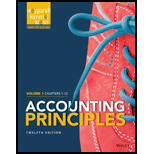
Acid-Test Ratio: It is a ratio used to determine a company’s ability to pay back its current liabilities using only liquid assets that are current assets except the inventory and prepaid expenses.
Inventory Turnover: It is a part of efficiency ratios used during the process of ratio analysis. It reflects the number of times a company’s inventory is converted into sale during a particular period. The cost of goods sold is divided by average inventory to get the value of inventory turnover.
Profit Margin: Profit margin reflects the portion of net income in the net sales. It is a profitability measure tool that is used to evaluate the net income a business earns on every dollar of net sales. It is computed as net income divided by net revenue.
Assets Turnover: It’s a measure to evaluate the efficiency of total assets used in the business to generate sales during a certain period. Assets turnover reflects the net sales as the times of average total assets.
Return on Total Assets: It is a measure to evaluate the efficiency of company’s assets. It reports the profit earned as the percentage of total assets used in the business. A company’s
Rate of Return on Common
Debt to Assets Ratio: It is the ratio between total assets of the company and the total liabilities. Debt ratio reflects the finance strategy of the company. It is used to evaluate company’s ability to pay its debts. Higher debt ratio implies the higher financial risk.
To compute: (a) Current ratio (b) Acid-test ratio (c) Accounts receivable turnover (d) Inventory turnover (e) Profit margin (f) Asset turnover (g) Return on assets (h) Return on common stockholders’ equity (i) Debt to assets ratio of W Company for 2017.
Want to see the full answer?
Check out a sample textbook solution
Chapter 18 Solutions
ACCOUNTING PRINCIPLES V.1 W/ WILEY PLU
- What will the annual profit be if the company services 600 customers annually on these financial accounting question?arrow_forwardWhat is the estimated ending inventory on April 30 for this financial accounting question?arrow_forwardThe Tin company uses the straight-line method to depreciate its equipment. On May 1, 2018, the company purchased some equipment for $200,000. The equipment is estimated to have a useful life of ten years and a salvage value of $20,000. How much depreciation expense should Tin record for the equipment in the adjusting entry on December 31, 2018?arrow_forward
- When a company sells goods on credit, which accounts are affected?a) Accounts Receivable increases, Sales Revenue increasesb) Accounts Payable increases, Sales Revenue increasesc) Accounts Receivable increases, Cost of Goods Sold increasesd) Accounts Payable increases, Cost of Goods Sold increasesarrow_forwardA company has a total cost of $50.00 per unit at a volume of 100,000 units. The variable cost per unit is $20.00. What would the price be if the company expected a volume of 120,000 units and used a markup of50%?arrow_forwardWhat is the profit margin ratio of this financial accounting question? Please correct answerarrow_forward
- A company’s ability to pay its short-term obligations is assessed using which financial ratio?a) Debt-to-Equity Ratiob) Current Ratioc) Return on Equity (ROE)d) Gross Profit Marginarrow_forwardBeginning inventory was $4,000, purchases totaled $31,000, and sales were $20,000. What is the ending inventory?arrow_forwardGrant Industries had $200,000 in sales on account last year. The beginning accounts receivable balance was $15,000, and the ending accounts receivable balance was $18,000. What is the company's average collection period?arrow_forward
- Can you please solve this financial accounting issue?arrow_forward24. General Accounting Problem: The liabilities of Ula Company are $87,060. Also, common stock account is $145,800, dividends are $91,610, revenues are $443,250, and expenses are $316,360. What is the amount of Ula Company's total assets?arrow_forwardWhich financial statement provides an overview of a company’s changes in equity during a specific period?a) Income Statementb) Balance Sheetc) Cash Flow Statementd) Statement of Retainedarrow_forward

 AccountingAccountingISBN:9781337272094Author:WARREN, Carl S., Reeve, James M., Duchac, Jonathan E.Publisher:Cengage Learning,
AccountingAccountingISBN:9781337272094Author:WARREN, Carl S., Reeve, James M., Duchac, Jonathan E.Publisher:Cengage Learning, Accounting Information SystemsAccountingISBN:9781337619202Author:Hall, James A.Publisher:Cengage Learning,
Accounting Information SystemsAccountingISBN:9781337619202Author:Hall, James A.Publisher:Cengage Learning, Horngren's Cost Accounting: A Managerial Emphasis...AccountingISBN:9780134475585Author:Srikant M. Datar, Madhav V. RajanPublisher:PEARSON
Horngren's Cost Accounting: A Managerial Emphasis...AccountingISBN:9780134475585Author:Srikant M. Datar, Madhav V. RajanPublisher:PEARSON Intermediate AccountingAccountingISBN:9781259722660Author:J. David Spiceland, Mark W. Nelson, Wayne M ThomasPublisher:McGraw-Hill Education
Intermediate AccountingAccountingISBN:9781259722660Author:J. David Spiceland, Mark W. Nelson, Wayne M ThomasPublisher:McGraw-Hill Education Financial and Managerial AccountingAccountingISBN:9781259726705Author:John J Wild, Ken W. Shaw, Barbara Chiappetta Fundamental Accounting PrinciplesPublisher:McGraw-Hill Education
Financial and Managerial AccountingAccountingISBN:9781259726705Author:John J Wild, Ken W. Shaw, Barbara Chiappetta Fundamental Accounting PrinciplesPublisher:McGraw-Hill Education





